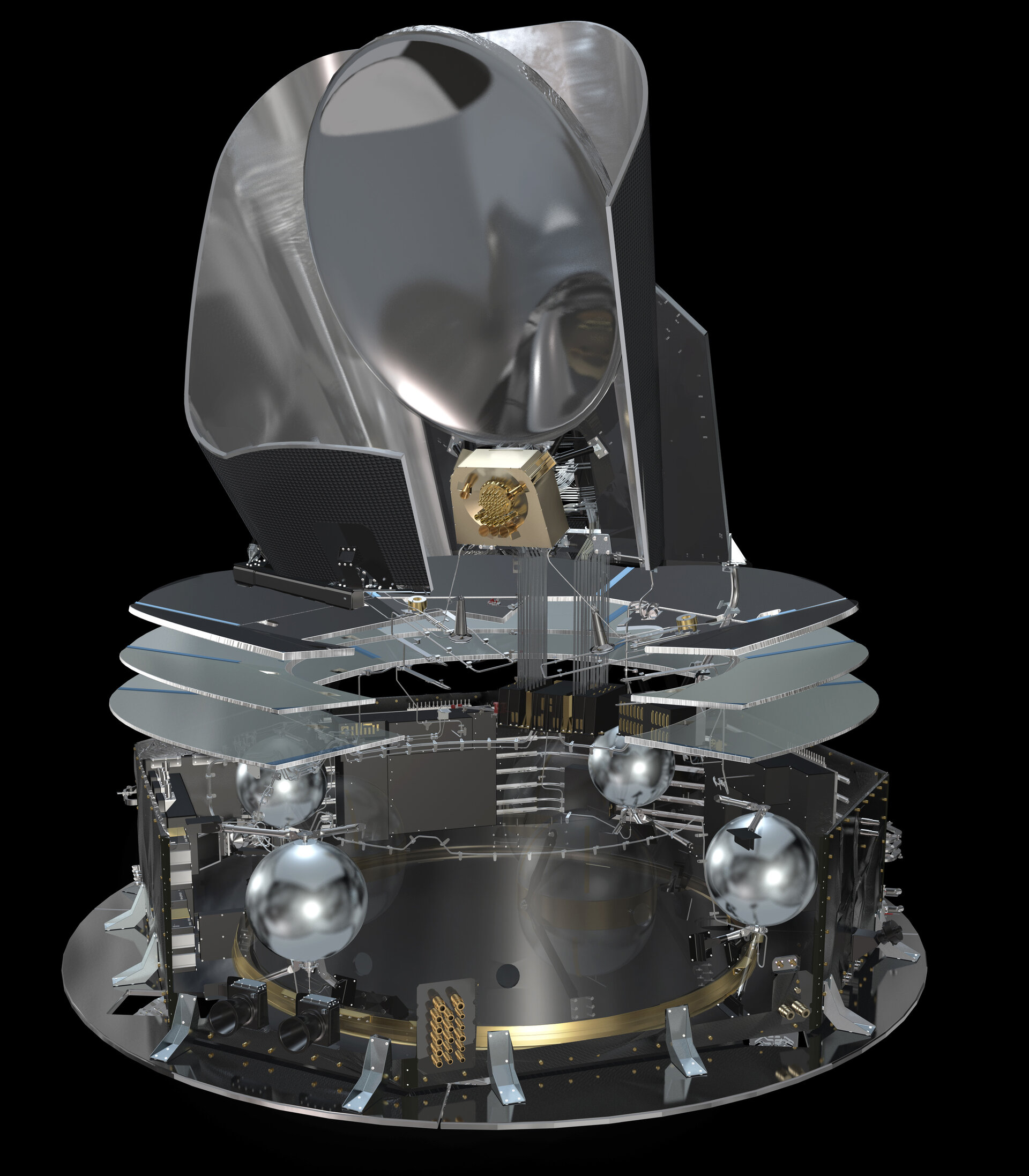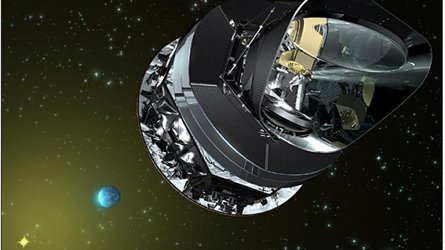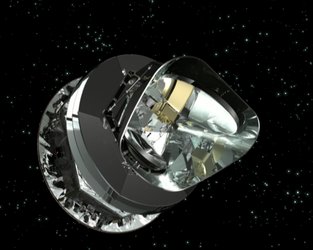Supercooled and supersized technologies aboard Herschel and Planck
Away from sunlight it can get very cold in space, but not cold enough for the Herschel and Planck missions, which ESA and European industry have equipped with state-of-the-art refrigeration systems to make the detectors of the two spacecraft among the coldest objects in the cosmos for the duration of their missions.
Both are due to be launched in May aboard a shared Ariane 5 to begin their journey to the same area of space, both orbiting around the Lagrange Point 2 (L2), 1.5 million km away behind Earth relative to the Sun - Herschel in a 800 000 km Lissajous orbit and Planck in a 300 000 km Lissajous orbit - and both are investigating the coolest parts of the Universe.
Herschel will be observing new-born stars and galaxies, asteroids and clouds of dust and gas, while Planck will map tiny variations in the temperature of the so-called Cosmic Microwave Background – the last remnants of the Big Bang, just 2.7 degrees above absolute zero. The primary detectors of the instruments on both spacecraft must be kept as cold as possible in order to obtain high-resolution data through the background noise whilst making observations.
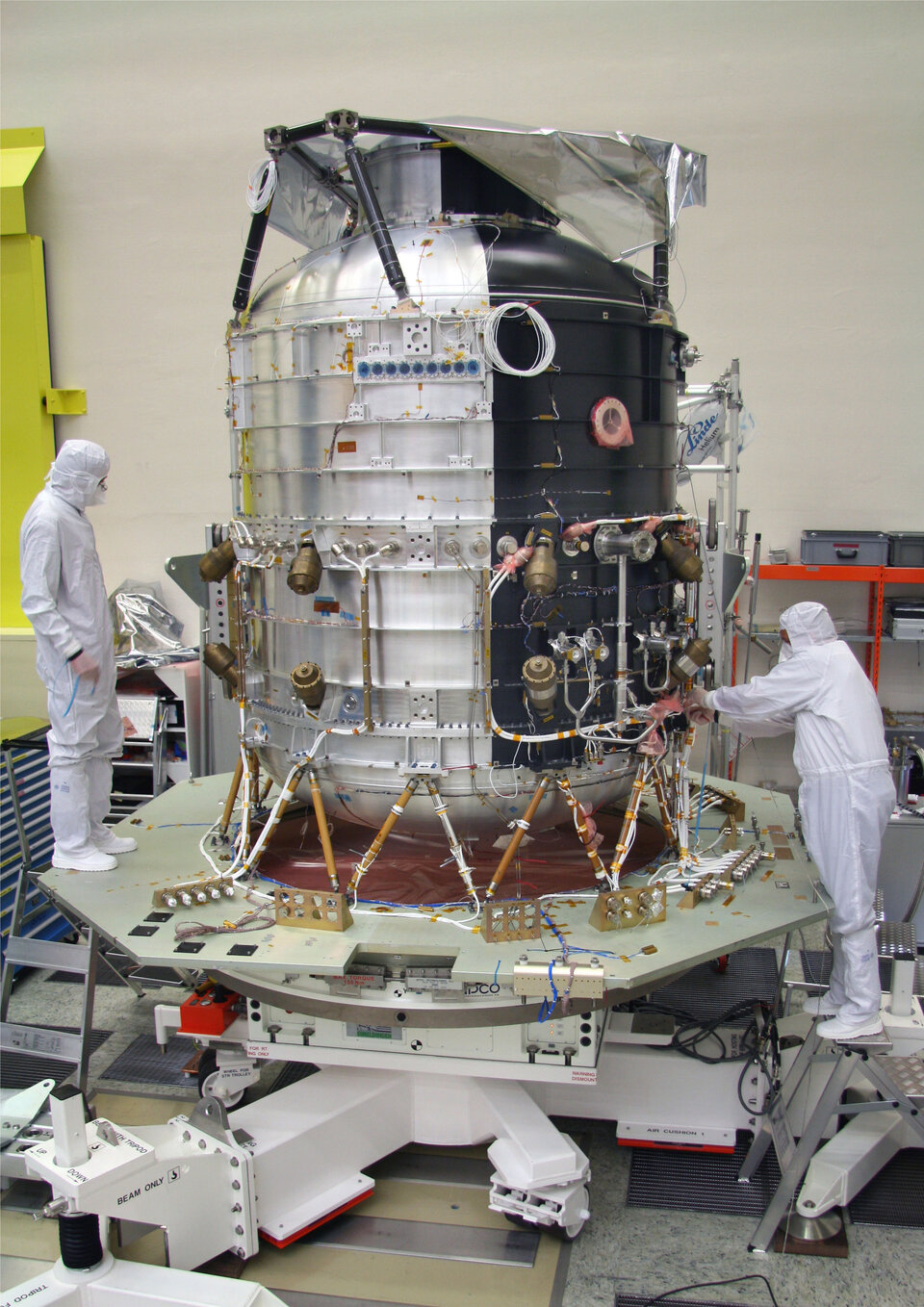
The decade-long Herschel-Planck programme enabled European industry to maintain and extend its skills in space-borne cryogenics, as originally built up during ESA's 1990s Infrared Space Observatory (ISO) programme.
Herschel carries with it the equivalent of a vacuum flask filled with liquid helium supercooled to 1.65K – that is, just 1.65°C above absolute zero. The spacecraft detectors will remain cooled to operational temperatures until the last of its around 2300 liters of superfluid helium in the cryostat vapourises. In fact Herschel houses the single largest cryostat to fly in space, the quantity of helium defining the mission lifetime of three and a half years. Two of the instruments have in addition built-in coolers to bring the operating temperatures of the detectors down to 0.3K – a third of a degree above absolute zero.
The Planck spacecraft incorporates first a passive cooling system using radiative shields facing deep space to achieve temperatures down to about 60K before innovative 'active' cooling systems more akin to a refrigerator, with no less than three different cryogenics systems nestled within each other that finally bring the detector temperatures down to operating temperatures, in one case down to 0.1K – a remarkable tenth of a degree above absolute zero.
Baking a telescope mirror
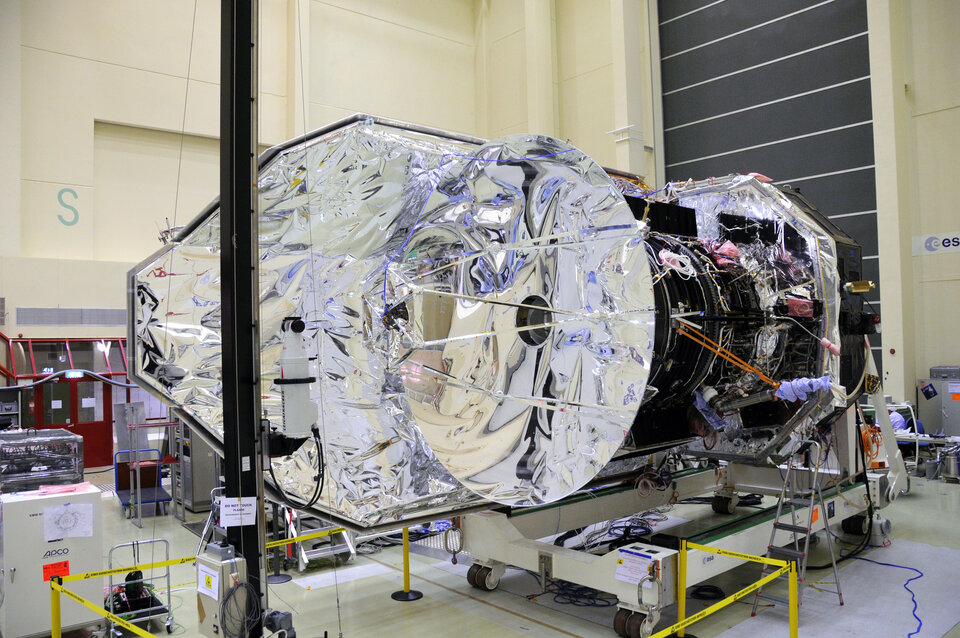
Another element the two missions have in common is that both their telescopes are constructed of innovative materials, in both cases representing major technological achievements.
Both telescopes needed to be light while also strong and stiff. Glass was too heavy to use in their manufacture, especially for Herschel's 3.5 m-diameter primary mirror; the single largest optical telescope ever launched into space.
Instead, after several feasibility assessments, ESA opted for a telescope built in twelve large segments of a ceramic material called Silicon Carbide (SiC). This meant segments of the mirror were 'baked’ like pottery in an oven rather than traditionally cast before the segments then were brazed together – forming the largest ceramic object ever built. The resulting mirror dish weighs just 300 kg, one third the weight of the Hubble Space Telescope's primary reflector, despite being almost two times larger in area.
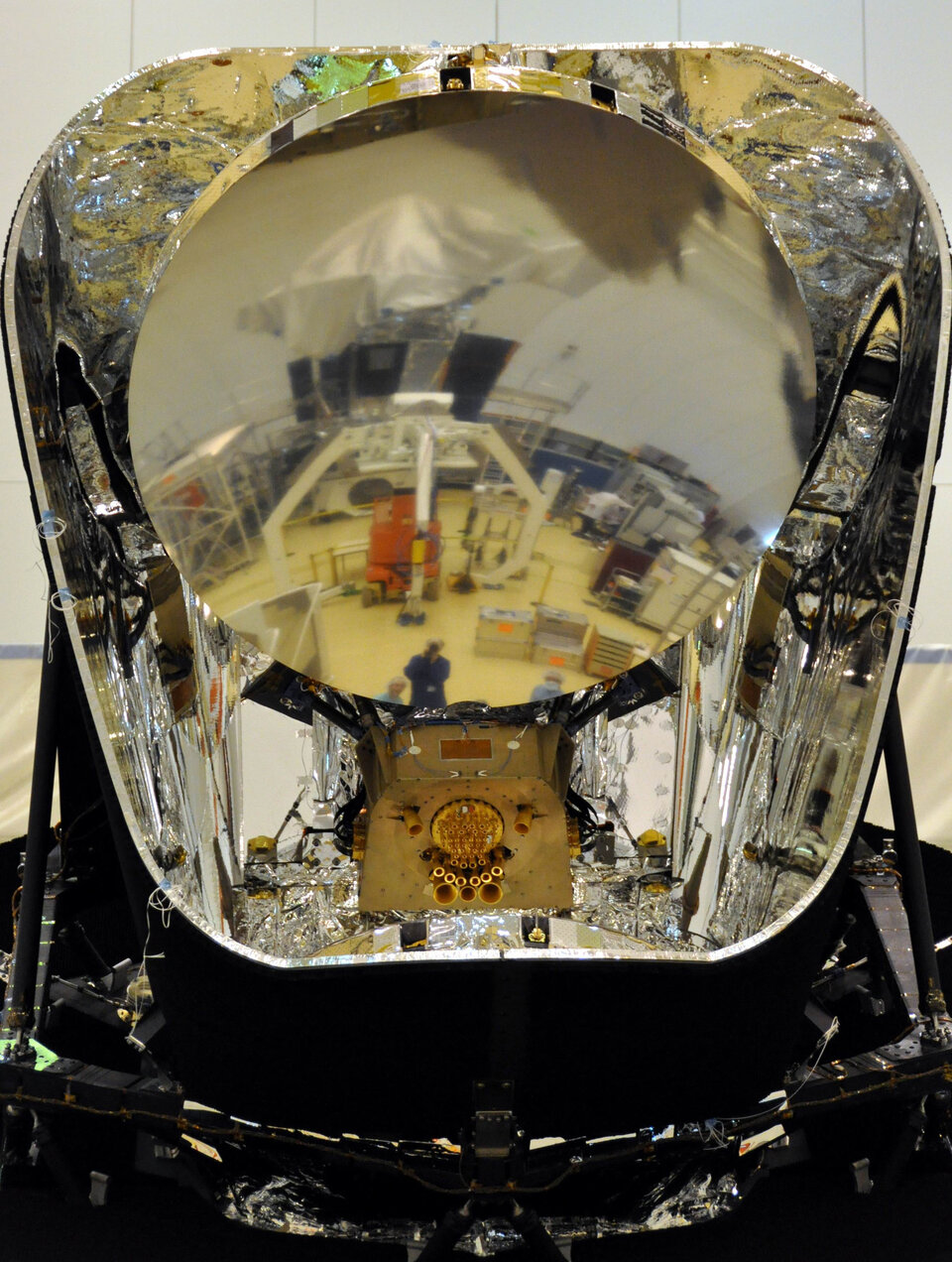
Planck's 1.5 m-diameter primary mirror is smaller, but was also more complex optically, being part of an off-axis telescope design to cut down on the amount of stray light reaching its highly sensitive sensors. The material selected to build the mirror was carbon fibre reinforced plastic (CFRP), a lightweight composite more often used to manufacture satellite radio antennas - as well as terrestrial boats.
This material cannot be ground and polished like standard reflectors and therefore a mold was shaped to a high accuracy of five microns (millionths of a metre) onto which first the carbon fibres were layed very accurately fibre by fibre and layer by layer and, after completion of all layers, cured in a vacuum oven at elevated temperatures. The reflector’s final shape had also to be accurately controlled so that it focused the incoming radiation correctly at its cryogenic operating temperature.
Both missions are designed for such extreme conditions and performance that adequate ground testing became a challenge in itself. In the end, cryogenic systems and telescope performance under cold vacuum conditions could indeed be tested separately, but their overall combined performance will only be known for sure once Herschel and Planck are in position at L2, commencing their missions to observe the cold Universe.
More information
Cryogenics
Chris.Jewell @ esa.int
Telescopes
Dominic.Doyle @ esa.int


